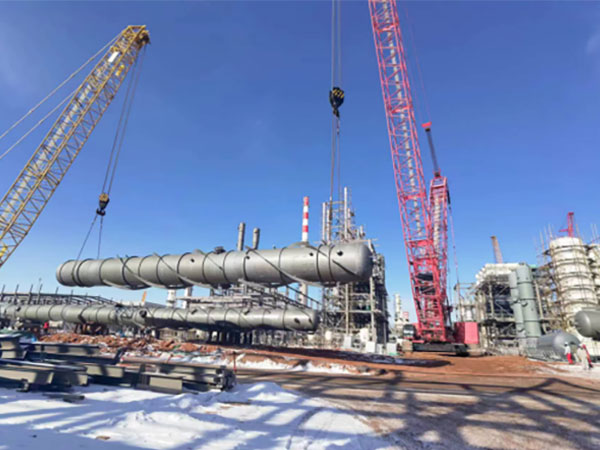
-
Consultation Hotline:
-
Whatsapp:


Steel structure, mainly composed of steel materials, is one of the main types of building structures. Its characteristics and advantages are as follows:
High strength and light weight: Steel has high tensile and compressive strength. Under the same stress conditions, the weight of steel structures is about 1/3 to 1/5 of that of concrete structures, facilitating transportation and installation, especially suitable for long-span and super-high buildings.
Good plasticity and toughness: Steel can produce large deformation under stress without sudden fracture, with excellent seismic performance, capable of resisting sudden loads such as earthquakes.
Customized design: Different materials (carbon steel, stainless steel, plastic, etc.) and pipe diameters are selected according to medium characteristics (temperature, pressure, corrosion, etc.) to adapt to the needs of multiple industries such as petroleum, chemical, and food.
Flexible layout: Complex routing arrangements can be achieved through pipe fittings such as elbows, tees, and flanges to adapt to plant equipment layouts and optimize space utilization.
High degree of industrialization: Components can be prefabricated in the factory (such as steel beams and columns) with high precision and stable quality. On-site assembly is fast, and the construction period is 30%-50% shorter than that of traditional concrete structures.
High space utilization rate: Steel structure components have small cross-sections, which can reduce wall thickness, increase building usable area (5%-8% higher than concrete structures), and facilitate flexible space division.
Efficient transmission: Smooth inner walls (such as low roughness of stainless steel pipes) reduce medium flow resistance, lower energy consumption, and are suitable for high-flow and large-flow transmission.
Complete safety protection: Equipped with pressure gauges, safety valves, check valves and other devices. Some pipelines need to undergo pressure tests (such as hydraulic tests) to prevent leakage or explosion risks.
Corrosion resistance can be optimized: Ordinary steel needs to be coated with anti-corrosion coatings (such as zinc plating) to improve corrosion resistance. Weathering steel can be used in special environments, with a service life of more than 50 years.
Fire resistance can be strengthened: The melting point of steel is about 1,500°C, but fireproof coatings (fire resistance limit of 1-3 hours) need to be sprayed to meet building fire protection code requirements.
Material diversity:
Carbon steel pipes: Low cost, suitable for non-corrosive media at normal temperature and pressure;
Stainless steel pipes: Resistant to acid and alkali corrosion, often used in food and pharmaceutical industries;
Plastic pipes (such as PVC, PP): Light weight and good insulation, suitable for low-pressure corrosive media.
Mature connection technology: Welding (high strength), threaded connection (convenient disassembly and assembly), flange connection (good sealing) and other methods are used to ensure system sealing.